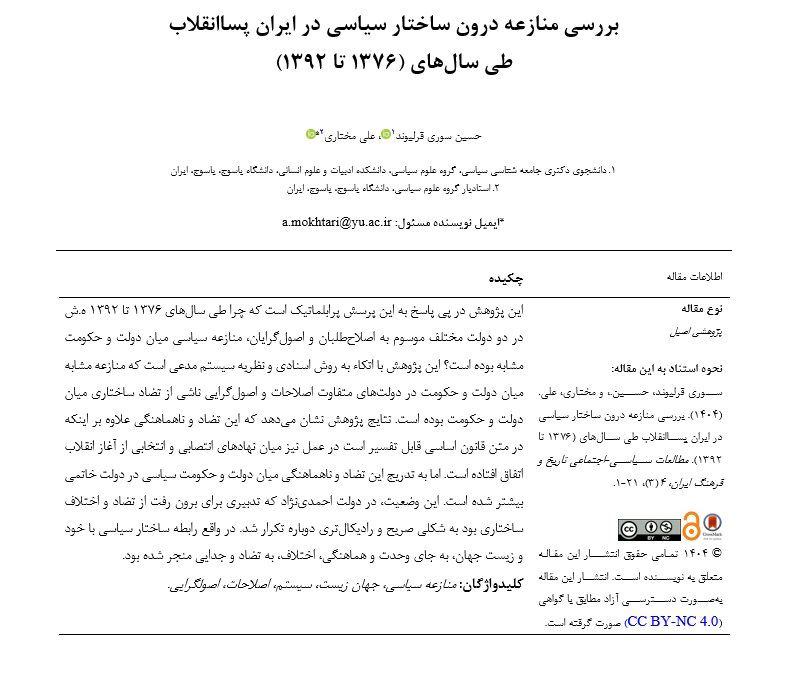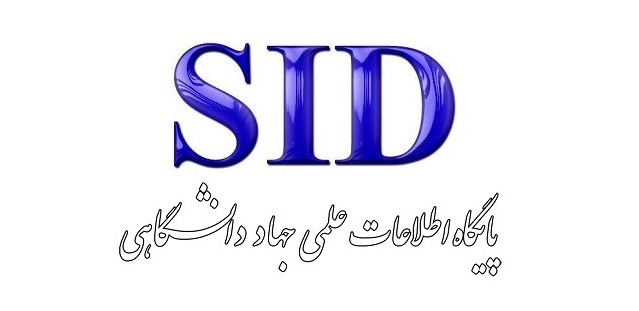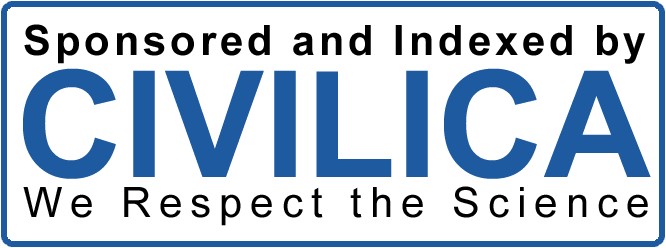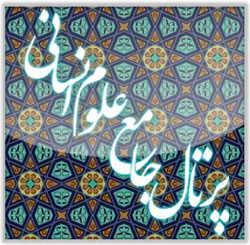Examining Intra-Structural Political Conflict in Post-Revolutionary Iran (1997–2013)
Keywords:
Political conflict, System, World life, Reforms, FundamentalismAbstract
This study seeks to answer the problematic question of why, during the years 1997 to 2013, under two different administrations known as the Reformists and the Principlists, the political conflict between the state and the government remained similar. Relying on the documentary method and system theory, this research argues that the similar conflict between the state and the government under the differing administrations of Reformists and Principlists stemmed from a structural contradiction between the state and the government. The findings of this study indicate that this contradiction and disharmony, in addition to being interpretable within the constitutional framework, have also manifested in practice between appointed and elected institutions since the beginning of the Revolution. However, this contradiction and disharmony between the state and the political government gradually intensified under Khatami’s administration. This situation reoccurred in a more explicit and radical form under Ahmadinejad’s administration, which was intended as a means to resolve structural conflict and discord. In reality, the relationship between the political structure, itself, and the lifeworld led not to unity and coherence but to conflict, contradiction, and separation.
Downloads
References
Alibabai, D. (2005). What Happened in Iran Over Twenty-Five Years? (From Bazargan to Khatami) (Vol. 1). Omid-e Farda Publications, Tehran.
Babaei Khor, R. (2009). Language and Everyday Politics in the Islamic Republic: A Linguistic Analysis of Political Conflicts in the 80s Master's thesis, Faculty of Law and Political Science, University of Tehran].
Baqi, E. (2004). The Democratic Reform Movement in Iran: Revolution or Reform? Sarayi, Tehran.
Barzegar Kashteli, H. (2011). The Relationship Between Language and Power in the Islamic Republic of Iran Master's thesis, Allameh Tabatabai University].
Bashiriyeh, H. (1999). Obstacles to Political Development in Iran. Gam-e No, Tehran.
Bashiriyeh, H. (2002). An Introduction to Political Sociology in Iran. Negah-e Mo'aser, Tehran.
Bashiriyeh, H. (2005). Transition to Democracy. Negah-e Mo'aser.
Bill, J. (2008). Politics in Iran: Groups, Classes, and Modernization (Translated by A. Morshedi Zadeh ed.). Akhtaran Publications, Tehran.
Damavandi Kenari, A. (2017). Examining Power Conflicts in the Structure of the Islamic Republic of Iran. Monthly Research of Nations, 2.
Erikson, E., & Weigard, J. (2003). Understanding Habermas communicative action and deliberative democracy. Polity Press, London.
Finlayson, J. G. (2018). 20th Century Philosophers: An Introduction to Habermas (Translated by H. Aghabigpour & J. Sahabi ed.). Sociologists Publications, Tehran.
Fozzi, Y. (2005). Political and Social Developments in Iran After the Islamic Revolution. Orooj Publications, Tehran.
Ganjizadeh, A. (1999). The Red-Clad Noble and the Gray-Clad Noble. Tarh-e No, Tehran.
Gill, S. (1993). Gramsci, historical materialism & international relations. https://doi.org/10.1017/CBO9780511558993.001
Habermas, J. (2001). Globalization and the Future of Democracy (Translated by Kamal Poladi ed.). Markaz Publications, Tehran.
Habermas, J. (2005). The Structural Transformation of the Public Sphere: An Inquiry into a Category of Bourgeois Society (Translated by Jamal Mohammadi ed.). Afkar Publications, Tehran.
Hall, A. D., & Fagen, R. E. (1956). Definition of System General Systems, the Yearbook of the Society for Advancement of General System Theory. The Society, Ann Arbor, 1, 18-28.
Halliday, F. (1999). Revolution And Politics. Macmillan, London.
Hashemi Rafsanjani, A. A. (2005). The Record and Memoirs of 1979: Revolution in Crisis. Office for the Publication of the Revolution's Teachings, Tehran.
Hero, P. (2007). Iran Under Clerical Rule (Translated by M. Javad Yaqoubi Darabi ed.). Baz Publications, Tehran.
Hosinzadeh, M. A. (2007). Dominant Discourses in Post-Revolutionary Governments in the Islamic Republic of Iran. Islamic Revolution Documents Center, Tehran.
Iran Newspaper. (2005). (238).
Iran Wire. (2007). https://iranwire.com/fa/features/3597
Islamic Republic News Agency. (2003).
Jalai Pour, H. R. (2000). The Hidden State: A Sociological Study of the Threatening Factors of the Reform Movement (1999-2000). Tarh-e No Publications, Tehran.
James, H. M. (1997). Coxian Historical as an Alternative Perspective to International Studies. Alternatives, 23(1), 1-1.
Khabar Online. (2007). https://www.khabaronline.ir/news/253030
Khajeh Sarvi, A. R. (2003). Competition and Stability in Political Systems: A Case Study of the Islamic Republic of Iran. Imam Sadiq University, Tehran.
Khaleqi, A. (2006). The Effectiveness of the Reformist Government Experience: Assessing Theories of Transition to a Democratic Government. International Political Approaches.
Koushafer, M. (2010). A Sociological Analysis of the Failure to Establish Democracy in Iran with Emphasis on Elitism (2006-2008) Tarbiat Modares University, Faculty of Humanities, Sociology Department].
Lesnaff, M. H. (2015). Political Philosophers of the 20th Century (Translated by Khashayar Diehimi ed.). Mah Publications.
Mardihha, M. (2000). Security in Coma. Taqal and Negar Publications.
Naghibzadeh, A. (2000). An Introduction to Political Sociology. SAMT Publications, Tehran.
Neshat Newspaper. (1999).
Palmer, M. (1993). A new essay on the science of politics (Translated by Manouchehr Shojaei ed.). Office of Political and International Studies, Tehran.
Poggi, G. (1990). The State: Its Nature, Development, and Prospects. Polity Press, Cambridge.
Pourali, S. (2016). Discourse Analysis of Cultural Policy-Making of the Ninth and Tenth Governments of the Islamic Republic of Iran in Higher Education Master's thesis, University of Tehran].
Rahmani, K. (2016). Consensus Among Political Elites and Political Development. Quarterly Journal of Political and International Research, 7(29), 76-84.
Rezaei, S. (2013). Examining the Capacities and Political-Cultural Barriers to Political Dialogue in Iran (1997-2011) Islamic Azad University, Central Tehran Branch, Faculty of Political Science and International Relations].
Rezaian, A. (2007). System analysis and design. Samt, Tehran.
Salimi, H. (2005). Dissecting the Mindset of Reformists. Gam-e No Publications.
Sardar Abadi, K. (2004). A Comparative Study of the Impact of Mass Media: A Case Study of Undergraduate Students at the University of Tehran Bachelor's thesis, University of Tehran].
Sarzaeem, A. (2017). Iranian Populism: The Quality of Mahmoud Ahmadinejad's Governance from the Perspective of Communication and Political Economy. Kargadan Publications, Tehran.
Shafieifar, M. (2012). Stability and Balance in the Islamic Republic. Scientific-Research Journal of Islamic Revolution Studies, 1(2), 63-91.
Shargh, N. (2004). Year 2(363).
Soltani, A. A. (2004). Discourse Analysis as Theory and Method. Political Science Quarterly(Winter).
Soltani, A. A. (2005). Power, Discourse, and Language: Mechanisms of Power Flow in the Islamic Republic of Iran. Nashr-e Ni, Tehran.
Supreme Leader's Office. (1999). https://doi.org/10.1002/ltl.40619991305
Takeyh, R. (2006). A profile in defiance (being Mahmoud Ahmadinejad).
Wright, R. (2000). The Last Great Revolution: Revolution and Transformation in Iran (Translated by A. Tadin & Sh. Ahmadi ed.). Rasa Publications, Tehran.
Yazdfarda. (2007). https://www.yazdfarda.com/news/af/25041
Zibakalam, S. (2006). Ahmadinejad and the Sociology of Power in Iran. Reflection of Thought, 74, 303-307.
Zolfaghari, V. (2018). Elections; Political Factions and Para-Political Peace in Iran: Representatives of Political Divides or Peace Brokers? Quarterly Journal of Strategic Studies in Public Policy, 10(XX).

Downloads
Published
Submitted
Revised
Accepted
Issue
Section
License
Copyright (c) 2025 Hossein Souri Ghorlivand (Author); Ali Mokhtari (Corresponding Author)

This work is licensed under a Creative Commons Attribution-NonCommercial 4.0 International License.







